


xxxxxThe Scottish
scientist and mathematician James Clerk Maxwell was educated at
the universities of Edinburgh and Cambridge, and spent most of his
working life in scientific research. It was while professor of
natural philosophy and astronomy at King’s College, London, that,
by a series of mathematical calculations -
JAMES CLERK MAXWELL 1831 -
Acknowledgement
Maxwell: watercolour on china, 1870s, after portrait by an unknown photographer – National Portrait Gallery, London
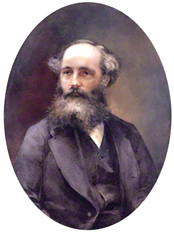 xxxxxThe Scottish scientist and mathematician James Clerk
Maxwell made an outstanding contribution to physics during a
relatively short career. It was while working at King’s College,
London during the early 1860s, that he published a series of
papers expounding the theory of electromagnetic radiation. Leaning
heavily upon the advances made earlier by Michael Faraday and
William Thomson (later Lord Kelvin) in their study of electricity
and magnetism, he analysed by a simple series of calculations -
xxxxxThe Scottish scientist and mathematician James Clerk
Maxwell made an outstanding contribution to physics during a
relatively short career. It was while working at King’s College,
London during the early 1860s, that he published a series of
papers expounding the theory of electromagnetic radiation. Leaning
heavily upon the advances made earlier by Michael Faraday and
William Thomson (later Lord Kelvin) in their study of electricity
and magnetism, he analysed by a simple series of calculations -
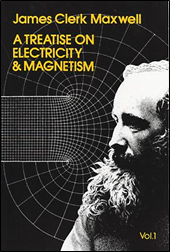 xxxxxAnd it was during this same period that Maxwell,
having read a paper by the German mathematician and physicist
Rudolf Clausius, turned his attention to the kinetic theory of
gases. Employing once again a mathematical formula by way of
explanation, he studied the distribution of velocity in gas
molecules, proving that heat was, in fact, a product of the energy
associated with the constant, random motion of the molecules. In
1865, Maxwell and his wife carried out a series of experiments to
examine and measure the properties of gases in terms of pressure,
temperature, and volume. His findings on heat conduction, however,
proved incomplete, and in 1868 were modified by the Austrian
physicist Ludwig Boltzmann
(1844-
xxxxxAnd it was during this same period that Maxwell,
having read a paper by the German mathematician and physicist
Rudolf Clausius, turned his attention to the kinetic theory of
gases. Employing once again a mathematical formula by way of
explanation, he studied the distribution of velocity in gas
molecules, proving that heat was, in fact, a product of the energy
associated with the constant, random motion of the molecules. In
1865, Maxwell and his wife carried out a series of experiments to
examine and measure the properties of gases in terms of pressure,
temperature, and volume. His findings on heat conduction, however,
proved incomplete, and in 1868 were modified by the Austrian
physicist Ludwig Boltzmann
(1844-
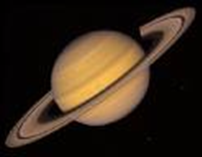 xxxxxIn earlier research, Maxwell also made advances in
astronomy and colour vision. In the late 1850s for example, while
working in Aberdeen, he first came to prominence after making a
special study of Saturn’s rings, first observed by Galileo in
1610. At that time there was much speculation as to the nature of
these rings. Many argued that they were rigid, but Maxwell held
that if that were the case then, given time, they would have
broken up. He put forward the idea that stability could only be
achieved if they were composed of thousands of small particles all
orbiting the planet independently. This theory was supported, in
fact, by spectroscopic studies carried out at Lick Observatory,
California in 1895, and confirmed by the first Voyager space
mission to Saturn over one hundred years later. This probe and a
subsequent one clearly showed that the rings were made up of
billions of particles of ice and rock.
xxxxxIn earlier research, Maxwell also made advances in
astronomy and colour vision. In the late 1850s for example, while
working in Aberdeen, he first came to prominence after making a
special study of Saturn’s rings, first observed by Galileo in
1610. At that time there was much speculation as to the nature of
these rings. Many argued that they were rigid, but Maxwell held
that if that were the case then, given time, they would have
broken up. He put forward the idea that stability could only be
achieved if they were composed of thousands of small particles all
orbiting the planet independently. This theory was supported, in
fact, by spectroscopic studies carried out at Lick Observatory,
California in 1895, and confirmed by the first Voyager space
mission to Saturn over one hundred years later. This probe and a
subsequent one clearly showed that the rings were made up of
billions of particles of ice and rock.
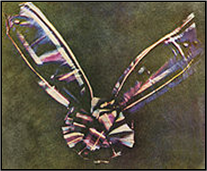 xxxxxAnd in 1861, after conducting research into colour
vision, Maxwell produced the world’s first colour photograph
during a lecture given at the Royal Institution. Having confirmed
the fact that all colours could be produced from varying mixtures
of red, green and blue, he proved this by projecting onto a screen
the combined image of a tartan ribbon (illustrated), each taken
earlier using the filters of these three colours. This three-
xxxxxAnd in 1861, after conducting research into colour
vision, Maxwell produced the world’s first colour photograph
during a lecture given at the Royal Institution. Having confirmed
the fact that all colours could be produced from varying mixtures
of red, green and blue, he proved this by projecting onto a screen
the combined image of a tartan ribbon (illustrated), each taken
earlier using the filters of these three colours. This three-
xxxxxMaxwell was
born into a fairly well-
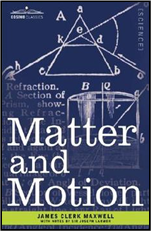 xxxxxHe was elected to the Royal Society in 1866 and, as
noted earlier, was awarded the Society’s Rumford Medal for his
contribution to the study of colour perception and colour
blindness. Among his other works were Theory
of Heat and Matter and Motion,
both published in the 1870s. Maxwell was a modest, kindly man and,
as a devout Christian, strongly opposed Darwin’s theory of
evolution. He devoted almost his entire life to scientific
research, but despite his outstanding contribution -
xxxxxHe was elected to the Royal Society in 1866 and, as
noted earlier, was awarded the Society’s Rumford Medal for his
contribution to the study of colour perception and colour
blindness. Among his other works were Theory
of Heat and Matter and Motion,
both published in the 1870s. Maxwell was a modest, kindly man and,
as a devout Christian, strongly opposed Darwin’s theory of
evolution. He devoted almost his entire life to scientific
research, but despite his outstanding contribution -
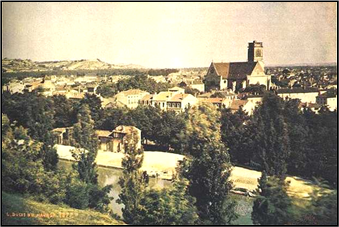 xxxxxIncidentally, in the early
1860s the French pioneer of colour
photography Louis Ducos du Hauron (1837-
xxxxxIncidentally, in the early
1860s the French pioneer of colour
photography Louis Ducos du Hauron (1837-
Vb-


